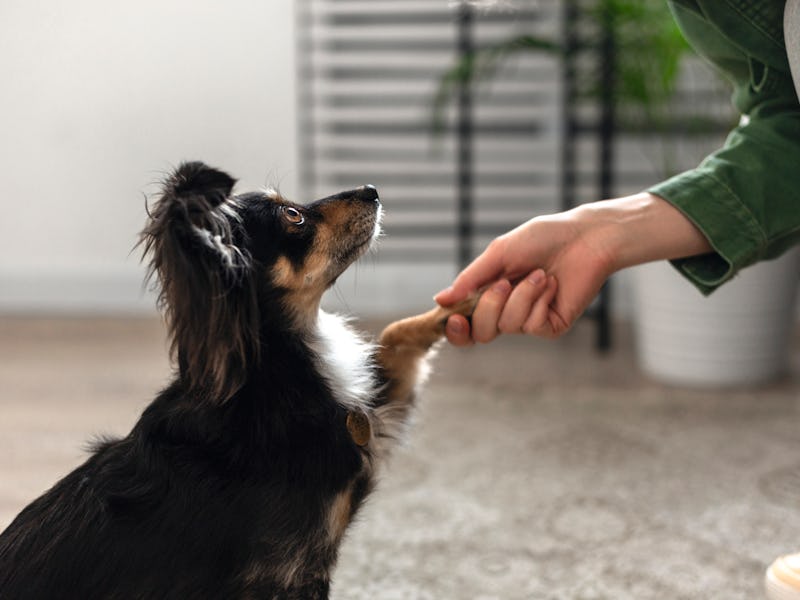Science Says You’ve Been Talking to Your Dog Completely Wrong
Slow down when talking to your pup.

Most people have a special voice reserved for dogs. It might pitch up or down, or even devolve into baby talk. And if you don’t have one, new research suggests cultivating one might do you and your canine some good.
A recent paper published in the journal PLOS Biology found that, based on activity observed in dog and human brains, dogs are more likely to understand information when it’s delivered at a slower pace. The research was conducted at the National Centre of Competence in Research Evolving Language.
“The main goal for this study was really to try and understand what goes on in the brain of a dog when it listens to human speech,” the paper’s first author Eloïse Déaux, a behavioral ecology researcher at the University of Geneva as well as a dog trainer herself, tells Inverse. “And not any kind of speech, but speech that is directed at him or her.” In particular, Déaux was interested in comparing brain processes in different species. In this case, she and her team homed in on how human and dog brains each process auditory information.
Déaux first standardized how quickly dogs and humans vocalize. She and her team extracted audio from YouTube videos of dogs barking, growling, whining, and howling, as well as humans speaking both to other humans as well as dogs in English, French, Italian, Japanese, and Vietnamese. The team found that dogs made about two vocalizations per second, while humans made four per second when speaking to other humans. However, dog-directed speech was slower than human-directed speech, at about three vocalizations per second.
These vocalization speeds translate into different tracks, which Déaux calls speech tracking. Dogs vocalize on what Déaux terms the delta band, while humans vocalize on the theta band. These two bands represent the number of vocalizations per second, but also translate to brain activity, which reflects populations of neurons all firing at the same time.
She used these conclusions in her second experiment, which involved observing brain activity in 11 humans and 8 dogs. First, the dogs put on electrode caps while they listened to recordings of their owners’ voices saying command words. Déaux and her team altered these recordings by slowing them down, speeding them up, or changing their content altogether. Then they recorded their brain activity through the electrodes. The team also observed whether the dogs complied with these altered recordings, which demonstrated whether the dogs could understand the commands.
She found that when human speech hit the delta band — about 2 vocalizations per second — that’s when dogs were most likely to comprehend their commands. Essentially, when human speech matched up with the speed at which dog brains best comprehend auditory information, the dogs could better understand what their humans were saying.
This finding tells dog owners to slow their roll, especially when giving commands. “Take your time to speak to your dog,” Déaux suggests. “If the dogs are biased in being able to better understand slow speech, then it makes sense that if you want more efficient communication to actually try and adapt your speech to their capacities.” With that, she emphasizes the importance of consistency with speaking to your dog. “It shows how important it is for us to always use the same words,” she says. For example, make sure the commands you use are consistent in word choice and tone. This way, you’re increasing the likelihood of hitting that delta band in your vocalizing and in your dog’s brain.
Déaux says this behavior is a consequence of human-dog coevolution. “As soon as we started domesticating dogs, we started working cooperatively with them,” she says. “These cooperative tasks would have required efficient communicative skills.”
Ultimately, this paper provides the scientific basis for speaking more slowly to your dog, but it also reflects the millennia-old bond we share with our pups.
“It suggests that the way the communicative interactions that we now have day to day with our dogs come from this long, cooperative bond that we've created with dogs since the beginning.”